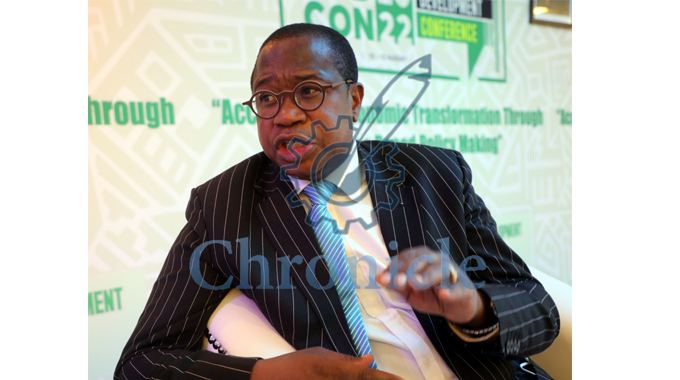The Chronicle

Prosper Ndlovu, Business Editor
GOVERNMENT has so far disbursed a total of US$311 million funds received through the International Monetary Fund (IMF) Special Drawing Rights (SDRs) towards financing priority development projects with transformative impact on people’s livelihoods.
Under the general allocation of the IMF Special Drawing Rights (SDR456 billion), which are equivalent to about US$650 billion, the government of Zimbabwe in August 2021, was allocated SDR677,4 million, which are equivalent to about US$958 million by the Bretton Woods institution Zimbabwe is a member of the IMF.
 International Monetary Fund (IMF)
International Monetary Fund (IMF)The SDRs were meant to address the long-term global needs for reserves, building confidence and fostering resilience and stability while enabling member countries to cope with the adverse impact of the Covid-19 induced crisis.
In line with the country’s drive to transform the economy into a middle-income status by 2030, the Government directed that the funds be used prudently, with accountability and transparency to support key projects.
The project focus covers social sectors such as health, education, vulnerable groups, production sector value chains, infrastructure investments, foreign currency reserves and contingency fund.
In a latest ‘Report on Utilisation of Special Drawing Rights’ Finance and Economic Development Minister, Prof Mthuli Ncube, explains how disbursed funds have been utilised so far.
 Finance and Economic Development Minister, Professor Mthuli Ncube
Finance and Economic Development Minister, Professor Mthuli Ncube“These SDR funds will be utilised over a period of three years with an amount of US$311 million disbursed up to June 2022 towards the following social programmes; procurement of Covid-19 vaccines (US$71 million), vaccine roll-out programme (US$6 million), procurement of Covid-19-related medical and testing equipment (US$10 million), support for Agriculture Productive Social Protection Scheme for rural and peri-urban households (US$80 million), support to the Road Development Project (Mbudzi) and Emergency Road Rehabilitation Programme (US$144 million),” said Prof Ncube.
“In the second-half of 2022, expected SDR disbursements of US$145 million will go towards the following areas: investments in social sectors (health US$35 million and education US$10 million), agriculture support (export revolving fund for agriculture (US$30 million cash guarantee to banks, and smallholder farmer irrigation schemes (US$20 million).
“Industry support (retooling/revolving fund) for new equipment and replacement for the value chains in the form of cash guarantee to banks and infrastructure development targeting housing development (US$10 million) and gold service centres (US$10 million).”
 Money. Image taken from Shutterstock
Money. Image taken from ShutterstockProf Ncube said another draw-down of US$155 million will be made towards acquisition of fertilisers and support to productive social protection programmes.
“This implies a total draw-down of US$300 million in the second-half of 2022,” said the minister.
“This amount will be drawn from the Contingency Fund and International Reserves portion of the SDRs resources.”
According to the detailed Treasury schedule seek by Business Chronicle, the IMF package would be channelled towards construction of health and education infrastructure in regions with extreme poverty and procurement of critical consumables and equipment.
With regards to industry support the funding is earmarked to support revitalisation of value chains mainly in the cotton, leather, pharmaceuticals and agro-processing.
In the transport sector, key infrastructure focus is directed to Harare-Beitbridge Highway, Masvingo Road Interchange Development Project (Mbudzi) and other ERRP projects.
Article Source: The Chronicle
